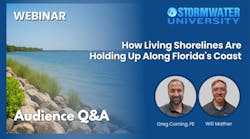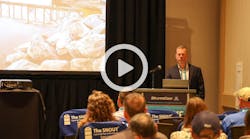
With wildfires still raging throughout southern California, it might seem strange to concentrate on a completely different kind of natural disaster. But there are some instructive similarities in what we do—or don’t do—when faced with unpleasant possibilities like fires, earthquakes, and floods.
Lucy Jones is a seismologist who has spent years trying to get people to better prepare for earthquakes. She’s done research into why some people take practical steps to get ready—using brackets to attach heavy furniture to the wall so it won’t topple over during a quake, for example—while others try hard not to think about the possibility of one happening at all. Denial can be a comforting thing, she’s found, right up until the moment when your bookcase is falling on you.
This article from the Los Angeles Times outlines some of the strategies she uses to get people to take action. Although it makes no mention of fire, many of the same principles would apply to getting people to do the necessary things before and after, such as clearing away excess vegetation and dead brush from around their homes and, afterward, gearing up to stop the erosion and flooding that often follows.
Part of her strategy involves getting people to think in terms of “when” rather “if” a major earthquake will occur. She’s found that merely talking about the probability of an earthquake seems to give people license to ignore that probability—to “tune out and hope for the best”—whereas talking about things like the financial implications of a quake tends to make them sit up and listen. “By emphasizing the financial aspects, I moved people away from fear that can paralyze decision-making,” she says in the article. “I showed them that they were going to have to pay for the earthquake, one way or another. Either now or after it happens. It was just a matter of when.” There seems to be a fine balance between debilitating fear—the kind that causes us to bury our heads in the sand—and just enough fear to make us act.
Another development that makes the possibility of an earthquake seem more realistic to people, she notes, is the requirements many cities are putting in place to either retrofit vulnerable buildings or, if that’s not possible, to tear them down. The early-warning systems that the US Geological Survey and others are developing—imperfect as they still are—also help make the possibility more real in people’s minds.
We still can’t predict exactly where wildfires will break out, but we’ve had enough experience in the last several years, especially in the Western states, to know what conditions make them more likely and what we can do afterward to limit collateral damage. California’s governor has said the state should consider extreme fires like the ones currently burning, and those in northern California in October, the “new normal.” Denial is getting tougher.
On a more personal note: Forester Media is located in California just north of the Thomas Fire now burning in Ventura County; our offices are safe for the moment, but several of our staff live in areas that have been evacuated. I’d like to express our appreciation to all the firefighters—thousands of them, from across California, neighboring states like Arizona, and as far away as Illinois—who are fighting to contain the fires.
About the Author
Janice Kaspersen
Janice Kaspersen is the former editor of Erosion Control and Stormwater magazines.

